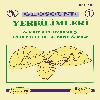Doğu Pontid magmatik arkında (KD Türkiye) neptuniyen dayklar ve blok tektoniği: Mesozoyik havzaların kinematiği ile ilgili bulgular
Uydu ve hava fotoğraflarından elde edilen fotolineasyonlar Doğu Pontid jeolojisine uyarlandığında, bu fotolineasyonların, bölgenin Mesozoyik'te çalışan temel fay tektoniğine karşılık geldiği görülür. Üç farklı doğrultuda (D-B, KB-GD, KD-GB) gelişmiş olan bu faylar, orojenik kuşağın blok fay tektoniğinin çatısını ve buna bağlı olarak gelişmiş ortogonal (birbirine dik) kıvrım sistemini oluşturmuştur. Kuzey Anadolu Fayı ve Kuzeydoğu Anadolu Fayına paralel olarak çalışmış olan bu kırık sistemleri ve havza analizi sonuçları, Mesozoyik havzaların pull-apart özelliklerini yansıtır. Güney yönlü bir yitim zonu üzerinde gelişen Mesozoyik havzaları, özellikle Kretase havzaları, farklı zamanlarda açılmış ve kapanmışlardır. Mesozoyik döneminde Liyas, Erken Kretase ve Geç Kretase'deki çok safhalı riftleşmeyi veya transtansiyonel tektonik rejimi doğrulayan neptuniyen dayk sistemleri, Doğu Pontidler'de Malm-Erken Kretase yaşlı havzaların, karbonat platformundan pelajik ortama geçiş döneminin Albiyen ve Kampaniyen yaş aralığını kapsadığını, ofiyolitik olistostromal melanjın, sözkonusu karbonat platformu üzerinde sedimanter dokanakla geliştiğini belirtir. Doğu Pontid magmatik arkındaki neptuniyen daykların kinematik analizi, Mesozoyik havzaların oluşumunu sağlayan KB doğrultulu sağ yönlü ve KD doğrultulu sol yönlü doğrultu atımlı fayların, Mesozoyik dönemde çalışan esas olarak D-B doğrultulu sol yönlü bir wrench fayının bileşenleri olduğunu ortaya koymuştur. Bu ana wrench zonu, Mesozoyik başlarında Atlantik Okyanusu nun açılmasına bağlı olarak Arap-Afrika Plakası'nın Avrazya'ya göre KD'ya doğru hareketi sonucu gelişmiş olmalıdır.
Neptunian dykes and block tectonics in the Eastern Pontides magmatic arc (NE Turkey):Implications for the kinematics of the Mesozoic basins
The view obtained from landsat imagery and airphotos of the eastern Pontide orogenic belt (northeast Turkey) imply that there are three distinctive lineaments, trend northeast, northwest and east-west, corresponding to basement weakness zones and define block-faulted tectonic during the Mesozoic. Block coupling produces a diagnostic en echelon arrangement of drag and drape folds which reflect the trace of the basement fault at the surface. For right lateral coupling parallel to theactive North Anatolian Fault Zone a clockwiseen echelon pattern is produced, whereas left-lateral coupling parallel to the active Northeast Anatolian Fault Zone produces a counter clockwise pattern. The Mesozoic basins were formed by this block fault framework in the three main distinctive weakness or tectonic zones on the Pontide rnagmatic arc which were formed by the southward subduction zone. Neptunian dykes were formed by the polyphase rifting of the magmatic arc during the Liassic (Hettangian - Sinemurian), Ealy Cretaceous (Albian) and Late Cretaceous (Campanian). The first rifting is related to break up of the granitic basement of the Hercynian, whereas the later two were related to the break up or drowning of the. carbonate platform which reflect transition from the platform carbonate environment to the pelagic fades. Kinematic analysis of the neptunian dykes of the eastern Pontide suggest that neotectonic regime (after the Miocene) was inherited from paleotectonic regime (before the Miocene). This has been achieved by the main left lateral wrench zone in the E-W direction between Arabian-African and Eurasian plates during the Mesozoic and Cenozoic when the Atlantic Ocean have been opened by the northeastward movement of Arabian -African plate.
